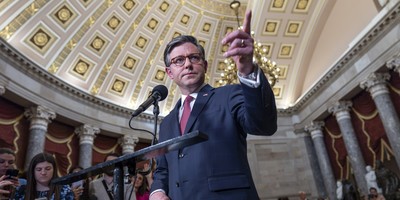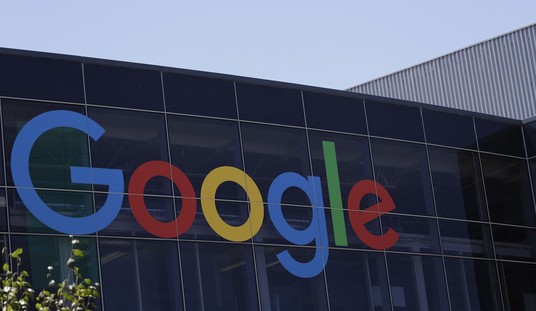They’re called voluntary employee beneficiary associations – VEBAs for short. The name might sound obscure. But this workplace arrangement will play a major role in determining whether the U.S. auto industry can sustain itself over the long run.

A VEBA is a tax-exempt trust fund covered under Section 501(c)(9) of the IRS code. It’s actually been around since the 1920s. Currently, there are more than 12,000 such entities, about a fifth of them in private industry. The ones negotiated in 2007 by the Big Three car manufacturers and the United Auto Workers (UAW) are attracting extra attention. That’s because on January 1, 2010, General Motors, Ford and Chrysler are scheduled to transfer control of their respective retiree health care funds to UAW-managed VEBA plans.
What brought about this dramatic move? From the automakers’ standpoint, it was nothing less than the need to stay in business. Their combined U.S. market unit sales share declined from 70 percent to 53 percent during 1998-2008. Last year, the companies experienced especially heavy losses in sales, stock prices and cash reserves. Total unit sales of GM, Ford and Chrysler cars and light trucks were only 7.17 million, down from 9 million in 2007. It was cold comfort that Toyota, Honda, Nissan and Hyundai also sold fewer vehicles, though their declines were not as steep.
Twice late last fall the CEOs of GM, Ford and Chrysler came to Washington, asking Congress for what amounted to a bailout. Each time they were denied. But the Bush administration responded favorably, pledging a combined $17.4 billion in emergency loans to GM and Chrysler (Ford said “no thanks” – at least for now), to be drawn from the $700 billion Troubled Asset Relief Program and on the condition that the companies become financial viable by March 31. This funding was on top of the $25 billion authorization for low-interest direct loans to automakers and suppliers enacted a year earlier as part of the new Energy Independence and Security Act.
Recommended
The soaring cost of pension, health care and other benefits by no means has been the only reason for the industry’s sagging fortunes, but it would be hard to deny its contribution. GM, Ford and Chrysler currently are on the hook for benefits payable to well over 1 million current and retired workers and spouses. GM retiree health care costs, for example, now add about $1,400 to the average per-vehicle sticker price; health care costs overall add about $1,900. Put another way, the full health care tab represents about $22 of a senior employee’s $73-an-hour package of wages and benefits. Automakers, bound by UAW contract, are not in a position to cancel such benefits. But the union, normally loath to renegotiate, this time recognized its survival was at stake.
Formally, the federal government protects private-sector defined-benefit retirement plans against the risk of failure through its Pension Benefit Guarantee Corporation (PBGC), an agency created in 1974 under the Employee Retirement Income Security Act (ERISA). Funded mainly through sponsor premiums and residual acquired assets, PBGC this decade has terminated thousands of plans, including those of United, Delta, and U.S. Airways (airlines), and Bethlehem, Weirton and LTV (steel). These acquisitions, and their subsequent management, have led to heavy PBGC operating losses, $11.15 billion alone in the year ending September 30, 2008. And with corporate pension plans sponsored by Standard & Poor’s 1500 Index firms having gone from a $60 billion surplus at the end of 2007 to a $409 billion deficit at the end of 2008, PBGC itself could require a bailout, despite reforms passed into law in 2006 to promote solvency.
So in hindsight, it’s a good thing that the auto industry and the union in the latter months of 2007 decided to restructure retiree health benefits rather than turn them over to the federal government. In relatively short order, negotiations produced highly complex agreements ratified by workers. Here are the bare-bones basics, as described in investor presentations: GM will shift $31.9 billion in cash and stock (at present value) into a UAW-managed retiree health care VEBA. Ford and Chrysler, under separate agreements, will move, respectively, $13.6 billion and $11 billion off their books and into union hands. That’s a total of $56.5 billion. The settlements, respectively, are for 68, 57 and 60 cents on the dollar. In effect, the carmakers have agreed to pay the union $56.5 billion in the short term to shed $88.7 billion in long-term liabilities.
The union understandably isn’t keen on passing on a more than $30 billion shortfall to current and future beneficiaries. But the alternative would have been worse: extensive downsizing, if not bankruptcies, and possible termination of retiree health benefits. The VEBA transfers provide at least a convincing appearance of a win-win situation. The Big Three carmakers get to unload enormous and growing liabilities from their balance sheets so they can focus on product innovation and labor cost reduction, and thus better compete with Japanese-run nonunion U.S. plants. The union, meanwhile, gets to manage its own benefits, without fear of unexpected employer modification or termination.
But there’s a risky downside: The United Auto Workers, for better or worse, is now a major player in the health care financing business. And if the money runs out, the union – that is to say, its beneficiaries – may be hung out to dry. Unlike a manufacturer, the UAW can’t convert stock to cash. Nor can it sell off a vehicle fleet or other hard assets. The union thus has an extra responsibility for sound portfolio management. That includes making tough and potentially unpopular decisions such as charging higher premiums and co-payments.
The union is giving members its utmost assurances that their benefits are safe. UAW President Ron Gettelfinger emphasizes that the new General Motors VEBA will be sound for at least 80 years. Yet the track record of union-run VEBAs inspires less than full confidence. For one thing, a number of agreements – e.g., AK Steel, Dana Corp. and Goodyear Tire & Rubber – are simply too new to draw any conclusions. More troubling, plans have been known to go belly-up. In 1998, Caterpillar paid the United Auto Workers $32.3 million to take over its retiree health plan. The fund went bankrupt in 2004, triggering a renegotiation and an eventual round of lawsuits. Similarly, a plan in 1993 set up between the UAW and Detroit Diesel was exhausted by 2004, again resulting in legal action.
Now it’s possible the new UAW-Big Three pacts can work. First, the tax breaks offered can serve as a buffer against downturns. Second, the union already has such agreements in force with GM and Ford, plus another, set up in 1992, with Navistar. Experience counts. Finally, health care cost inflation has subsided for about a half-decade.
Yet at the same time, the new agreements raise the stakes dramatically to the point where plan termination could be a national calamity. And a calamity is not out of the question. Cornell University labor relations specialist David Lipsky believes UAW negotiators may have been overly optimistic in their projections. “If they’re wrong, for example, about the rate of increase in health care costs, then they could be woefully wrong on how long this fund will be solvent,” he said. Lance Wallach, a Plainview, N.Y.-based VEBA consultant, predicts an outright meltdown. “The cost of health insurance keeps going up each year. The money that funded this VEBA was not enough to begin with,” he remarked, citing the GM agreement, which assumed 5 percent annual health care cost increases and 9 percent annual asset returns.
But it isn’t just the liability side of the equation that should cause worry. Organized labor is now part of a growing movement known as “Socially Responsible Investing” (SRI), whereby Left-leaning fiduciaries place assets in companies with ostensibly morally sound practices and shun companies with supposedly morally unsound ones. “Good” companies could include those that have affirmative-action programs, support community education or invest in anti-pollution technology. “Bad” ones could include those that trade with countries with documented human-rights violations, refuse to negotiate with a particular union or manufacture products harmful to health (e.g., cigarettes, liquor).
Socially Responsible Investing is no longer a small niche within the investment world. By 2005, SRI investor capital had reached $2.3 trillion, or about 9 percent of all professionally-managed assets. That’s an impressive sum. But these investments don’t necessarily deliver for intended beneficiaries. Hudson Institute Senior Fellow Diana Furchtgott-Roth recently concluded that only about 60 percent of union-sponsored pension funds had asset-to-liability ratios of at least 80 percent. By contrast, around 90 percent of nonunion plans met this threshold.
Benefit plan managers, like the unions on whose behalf they operate, are prone to viewing themselves as agents of positive social change. Union officials, for instance, have forged close ties with the Investor Network on Climate Change, an anti-global warming project. The trustees picked to run the VEBAs will mirror the views of those officials. Perhaps the unions need a reminder that ERISA statutes explicitly stipulate that investment decisions be based on prudence and maximization of return rather than advancement of larger social purposes.
Even shorn of non-business motives, union-managed benefit plans have their pitfalls. They often charge high management fees, lack flexibility for modification, and are driven by considerations of victory at the bargaining table. On the latter point, employer and union negotiators view it as easier to raise future benefits than current wages. The problem, as we now know, is that the future might not happen.
Then there’s a more traditional bad union habit: corruption. The union-controlled VEBAs would be run by a joint board of trustees who will hire its own investment managers. With enormous sums of money beckoning, all sorts of shady characters might wind up running the show, engaging in embezzlement, fraud or collusion with the criminal underworld. The Longshoremen, the Carpenters and the Laborers each have experienced highly-publicized pension scandals this decade. Why assume the United Auto Workers is any more virtuous? Forbes magazine automotive specialist Jerry Flint sees the new VEBA plans as ripe for the taking:
There will be billions in medical contracts to be given out. The folks making the decisions will be low-paid union folks. The folks wanting the contracts will be tempted to do what they can to get them. It doesn’t take a lot of imagination to see the risk of corruption on a grand scale.
The U.S. Department of Labor this decade under Secretary Elaine Chao took aggressive steps in making union leaders more accountable to their members and the general public. In particular, the department introduced a new financial reporting form, T-1, that would require officers of union trust funds to fully spell out annual revenues and expenditures. The AFL-CIO spent several years in court, unsuccessfully, fighting the new regulation. Luckily for the federation, it now has an ally in Chao’s nominated successor, Congresswoman Hilda Solis, who appears to give union oversight a low priority.
Can VEBAs work? In the case of the automobile industry, they must. Mindful of all the risks of putting tens of billions of assets into the coffers of organized labor, the restructuring of existing retiree health plans, if nothing else, is a welcome alternative to the bailout mentality pervading our nation’s capital. It’s worth a chance. But the DOL, along with other parties, have to be willing to hold the UAW to an old standard: “Trust, but verify.”

























Join the conversation as a VIP Member